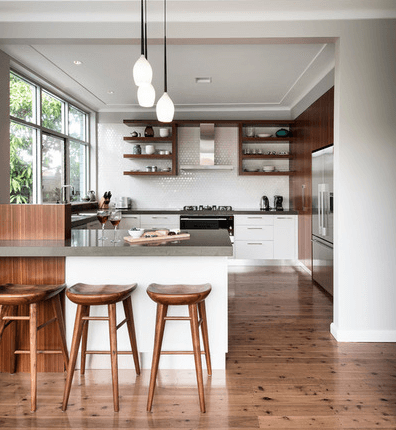What's Your Neutral? Beige or Gray?

By Gillian Lazanik
When I start a project with a client, one of the first things I like to determine is if they’re more of a beige or a gray. What I mean by that is, nearly all projects need a neutral color that works as a general backdrop, or canvas, that will steer the direction of the design. I generally find that clients gravitate to one neutral more than the other. Selecting a neutral doesn’t mean we won’t use other colors in the space; it just means the palette will start with an underlying neutral tone. People’s preferences for beige or gray tend to trump trends, but one is often trendier than the other. But no matter which one is currently the most popular, beige and gray will always stand the test of time.
1. Best to choose one or the other. Even if you don’t want to use a lot of gray or beige, it’s still important to determine which way you lean. Beige and gray look fabulous with natural materials, such as wood. But your finishes (your countertops, appliances, fixtures) will need to follow a particular direction. Some may disagree with me, but it doesn’t work well to use beiges and grays together, unless the distinction between the two is blurry. In this kitchen, the countertops and wall color indicate that this person’s preference is gray.
2. Warm things up with beige. If you lean toward beige, you’ll often like browns, taupes and warmer colors. Even if you want your space to be all wood, you’ll still need to choose your backsplash, countertops and fixtures. Oil-rubbed bronze or copper fixtures work particularly well in beige spaces. Creamy marbles and limestones with brown and gold veining also work well.
3. Not all grays are cold. Grays come in so many different temperatures. There are plenty of warm grays out there to keep your space looking cozy. When working with grays, it’s important to choose those with the same undertone (blue, green, red or pure gray.) You can choose fabrics, paints and accessories that have a multitude of shades, some lighter, some darker, as along as the undertone is the same.
4. Beige loves contrast. Beige looks really great when it’s paired with much lighter and much darker elements. If you don’t bring in contrast when using beige, you run the risk of your space looking “muddy” in color.
5. Dark grays look best with light or medium wood tones. If you choose a dark wood, the beauty of the gray and the wood might get lost. If you must use dark wood, choose a lighter shade of gray. And by the way, dark woods look fabulous with beige.
6. Gray is color’s best friend. Grays really help colors pop, especially against a darker gray. The nice thing about having gray as your backdrop color is that it gives you the option of switching out your accent color. It’s very easy to refresh a gray canvas by simply adding or changing colors.
7. Beige and color can get along too. It’s important that you choose beiges with the same undertone. Softer colors work well with beige. If you introduce dark browns to your palette, it opens up your options for brighter and more vibrant color choices.
8. Beige and gray look fantastic with black elements. Black doesn’t have to darken a space. In fact, black will often make a space appear brighter if used to create contrast. Shades of charcoal will have the same effect when used in light gray spaces. But it’s best to stay away from using charcoal in beige spaces since they will most likely clash.
9. Gray works well with many types of stone. There are lots of stones that have gray veining or undertones. Carrara marble, Statuario marble, Statuarietto marble and slate are all great examples. Stone is a classic finish that will never go out of style. But please don’t mix these types of marbles with beige stone. If you can’t find another stone to coordinate with your chosen marble or slate, look into a porcelain tile to work with your natural stone.
10. When it’s OK to mix. On rare occasions, it’s possible to find grays or beiges that have a blurry line distinguishing the two. That’s when you can mix them. But it’s a challenging endeavor. And what may be even more difficult is finding a person who loves both beige and gray equally.
Original source: Houzz
Read original article here
Original article: The Province
Read original aricle here.










